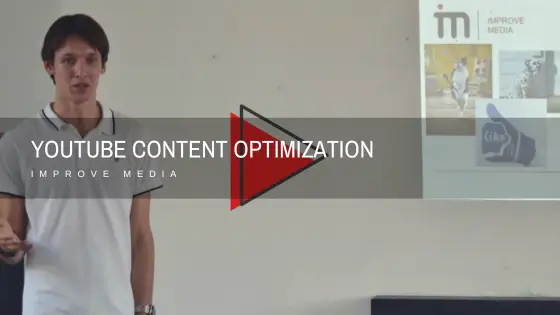YouTube Content Optimization
In today’s world, YouTube and video content as a whole are becoming increasingly important and significant sources of traffic generation.
Moreover, YouTube is an excellent platform that allows you to become an industry opinion leader and receive good payouts from affiliate programs and advertising. However, all of this is contingent on having good, high-quality, and engaging content.
The Importance of Organic Search
Let’s assume that you or your company already have such content. You create videos that have the potential to gain tens, and in some cases, hundreds of thousands of views.
You shouldn’t count on virality, as only 2-3% of all videos go viral.
You also shouldn’t count on traffic from social networks – you can certainly get a good number of views, but in all cases, the number is limited by the number of groups and users who shared your video content.
But what if your video appears in the TOP-10 organic search results for a query?
Let’s look at some examples:
Or another example:
The conclusion suggests itself: video optimization allows it to reach the TOP-10 organic search results and guarantees good traffic from the search engine. In addition, proper optimization allows you to appear more often in suggested videos on YouTube, which also provides additional traffic growth.
How to optimize videos with SEO? What points does YouTube SEO include? Let’s take a closer look at these questions in our article.
Step 1. YouTube Keyword Research
YouTube SEO starts with keyword research and collection.
First, gather keyword ideas for your video topic. This is quite simple – enter one of your keywords in the YouTube search bar and look at the suggested options.
The suggested keywords are perfect for your video. Why? Because all of these queries are actually entered by people in YouTube search. Therefore, you don’t have to guess whether a particular query is popular or not. If YouTube suggests it to you, then it’s 1000% popular.
Another way to select keywords is to copy the keywords used for optimization in top videos in your niche.
To select top videos, simply use the standard YouTube filter and find videos that have gained the most views:
Have you selected the right videos? Great, now the next step is to determine which titles, descriptions, and tags are used in the video for its optimization.
Go to the first video in the list and check its metrics:
Check your website’s positions right now!
To collect information, we recommend using a browser extension for Chrome called VidIQ.
By collecting all this data, you will have enough information to build a keyword cluster for your video.
Step 2. Choosing the Best Keywords for Your Video
The next step is to choose the most suitable keywords from all those you collected in the previous step. How to do this?
The best option is to select keywords with low competition. The better your video content and the lower the competition for the query, the higher the probability of it reaching the TOP positions.
How to determine the competition for a query? It’s very simple: just check the number of search results for each of your main queries:
Additionally, you can use the capabilities of the same VidIQ, which also shows the level of competition for each query. The recommendations also indicate that focusing on highly competitive keywords is only advisable if your channel has more than 1 million subscribers. If you have a new channel, focus on low-competition queries.
Step 3. Publish Videos with High Audience Retention
Here’s a small but important truth: for a video to rank well on YouTube, you need to make people watch it.
The key point is not just to visit the video and like it, but to watch it for as long as possible.
The amount of video your audience watches is called Audience Retention. In other words, it’s an indicator of audience retention throughout the entire video viewing (a kind of analogue to bounce rate for websites).
As YouTube itself notes, Audience Retention is an EXTREMELY important ranking factor that largely determines whether your video will appear in the TOP for a query.
Step 4. YouTube Video Optimization with SEO
So, at this point, you have collected keywords, selected the best ones, you have high-quality content, no worse than your competitors, you have analyzed everything.
The last step is the direct SEO optimization of the video, which includes the following points:
- Video title. The minimum length is 5 words, the optimal is 5-8 words. 50% of the words from the total length should be your keywords.
- Video description. General requirements: the main keywords should be in the first 25 words of the description, the minimum description is 180-220 words, in total there should be 4-5 keywords.
- Tags – they are not super important for SEO, but they can help. As we mentioned in the previous step, the best option is to collect tags from competitors using the VidIQ extension.
That’s all you need for YouTube video optimization! However, many people, when publishing and optimizing video content, forget about such an important point as video promotion. It is promotion and views that will help your video become more popular and gain the number of views that will be necessary for it to reach the TOP.





